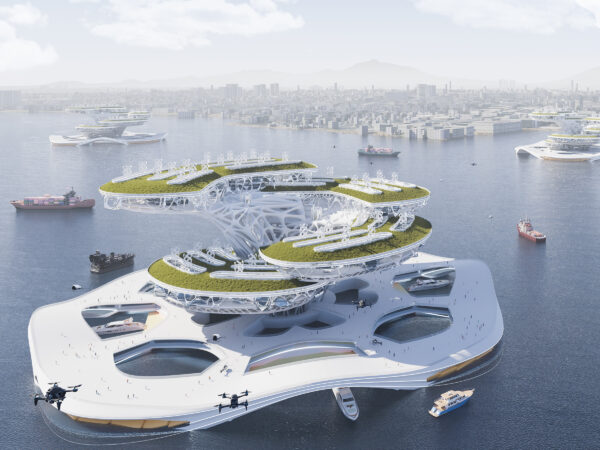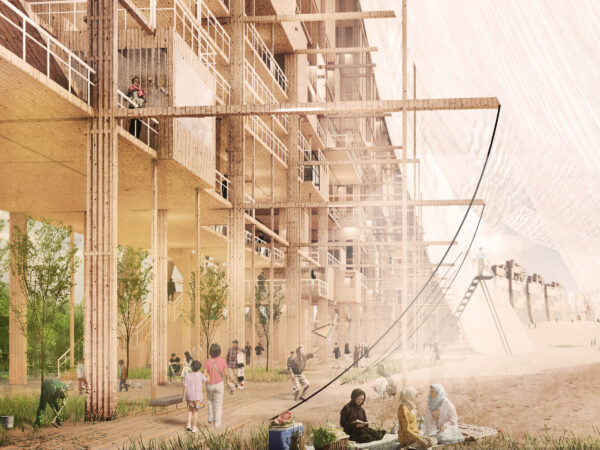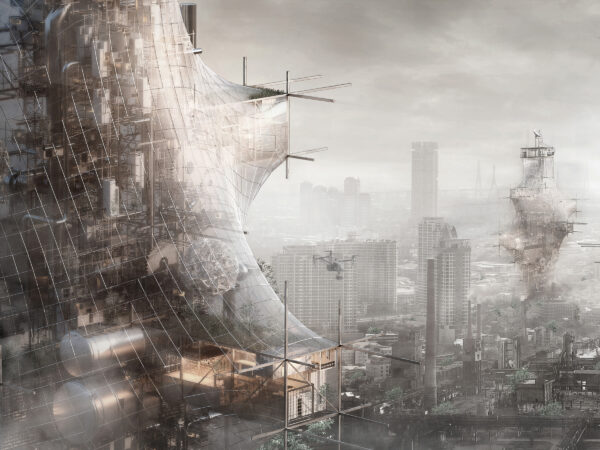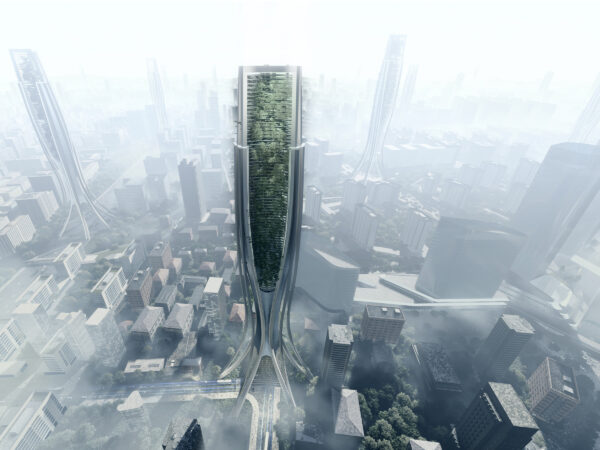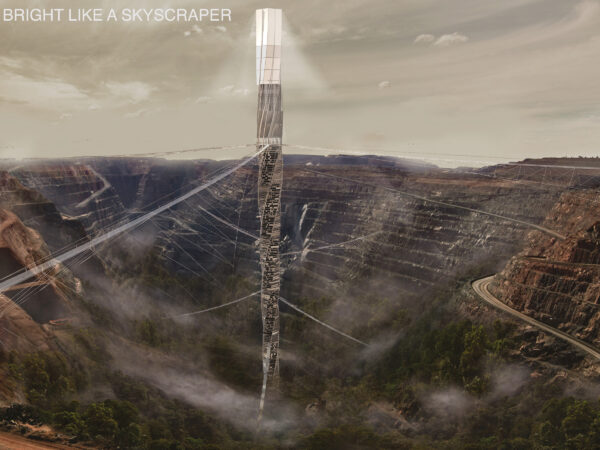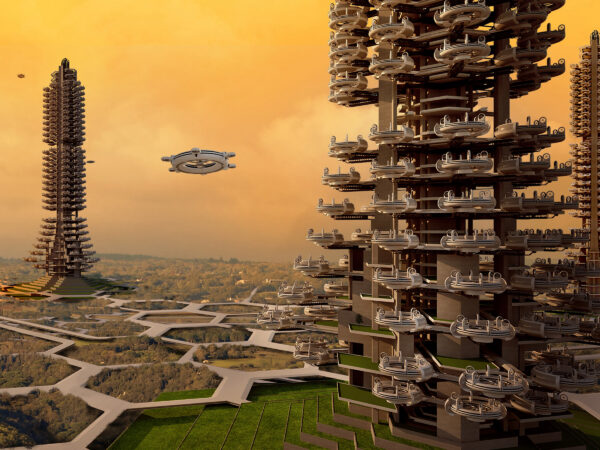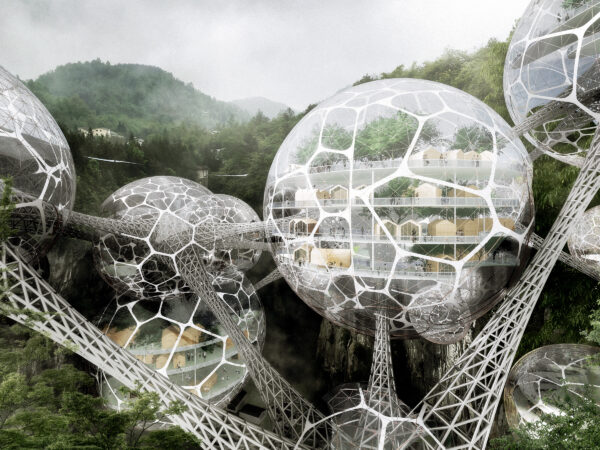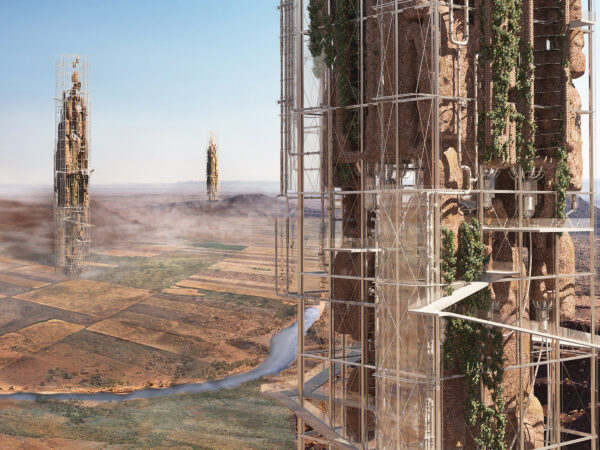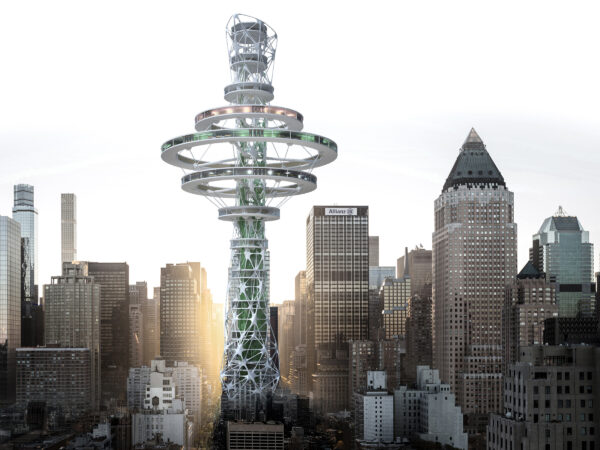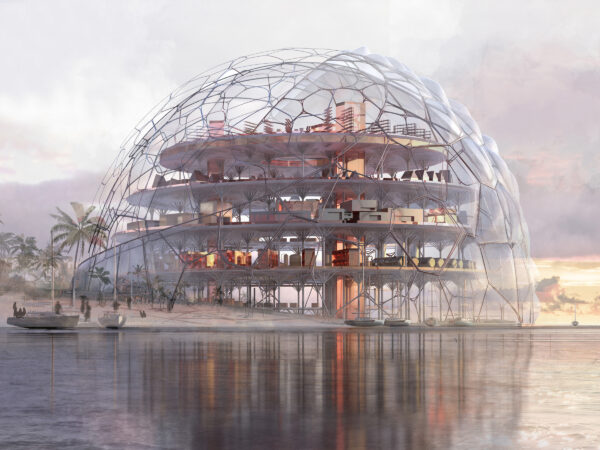Honorable Mention
2022 Skyscraper Competition
Christopher Tanihaha, Vincentius Kevin Aditya, Arnetta Hamijoyo, Christina Putri Larasati, Evan Januar, Gavrila Mandy Kahuni, Eugenia Jessica, Felia Alexandra Linoh, Luciana Augusta, Gregorius Christian, Reynaldi Daud
Indonesia
Sinking land has become inevitable. It is mainly caused by the increase of seawater level and got worse by the decreasing underground water table that is happening simultaneously. Sinking land causes land scarcity which makes coastal residents around the world lose their homes. According to BBC News in 2018, the fastest-sinking city in the world in Jakarta, Indonesia. Jakarta is sinking by an average of 1-15cm a year and nearly half the land now sits below sea level. The dramatic rate of sinking is partly down to the excessive extraction of groundwater for drinking water and everyday hygiene purposes by city dwellers. Piped water is not reliable and hardly available in most areas so people have no choice but to resort to pumping water from the aquifers deep underground. So the main goal is to be a buffer that acts as a vessel for ex-dwellers of the sinking city that also provides potable water for the remaining citizens on land at the same time. Read the rest of this entry »

